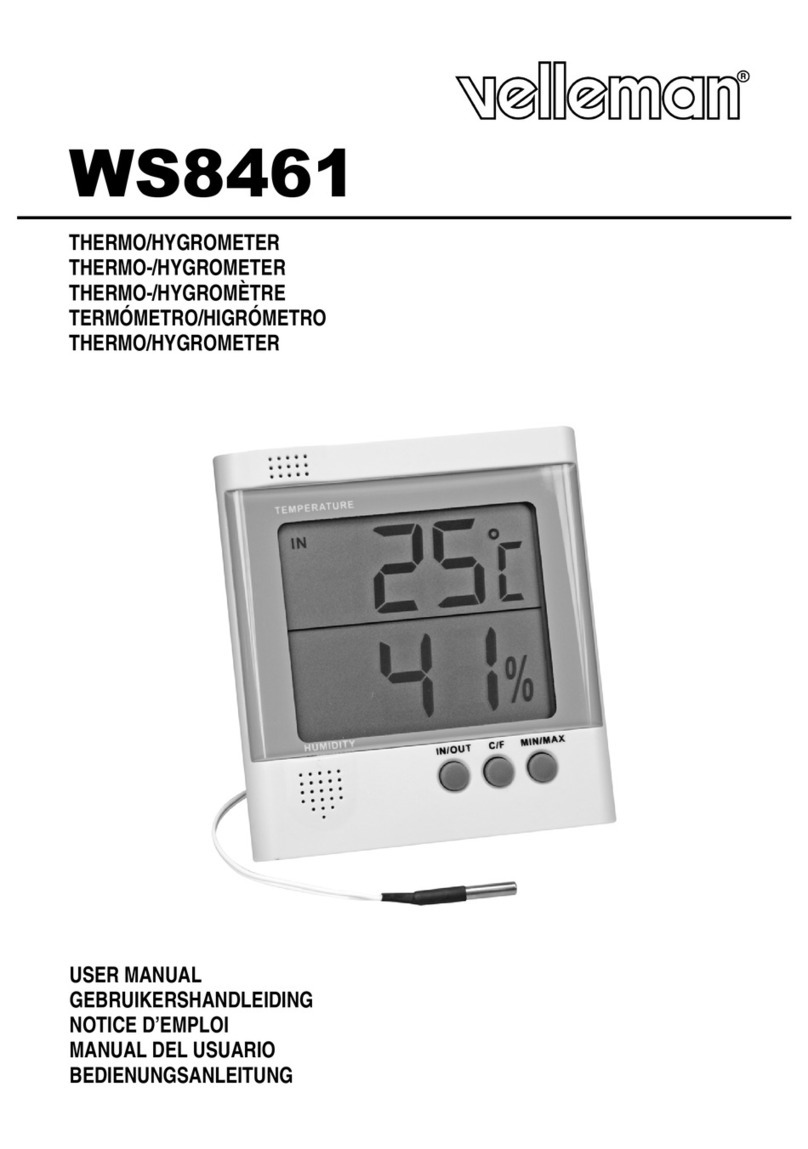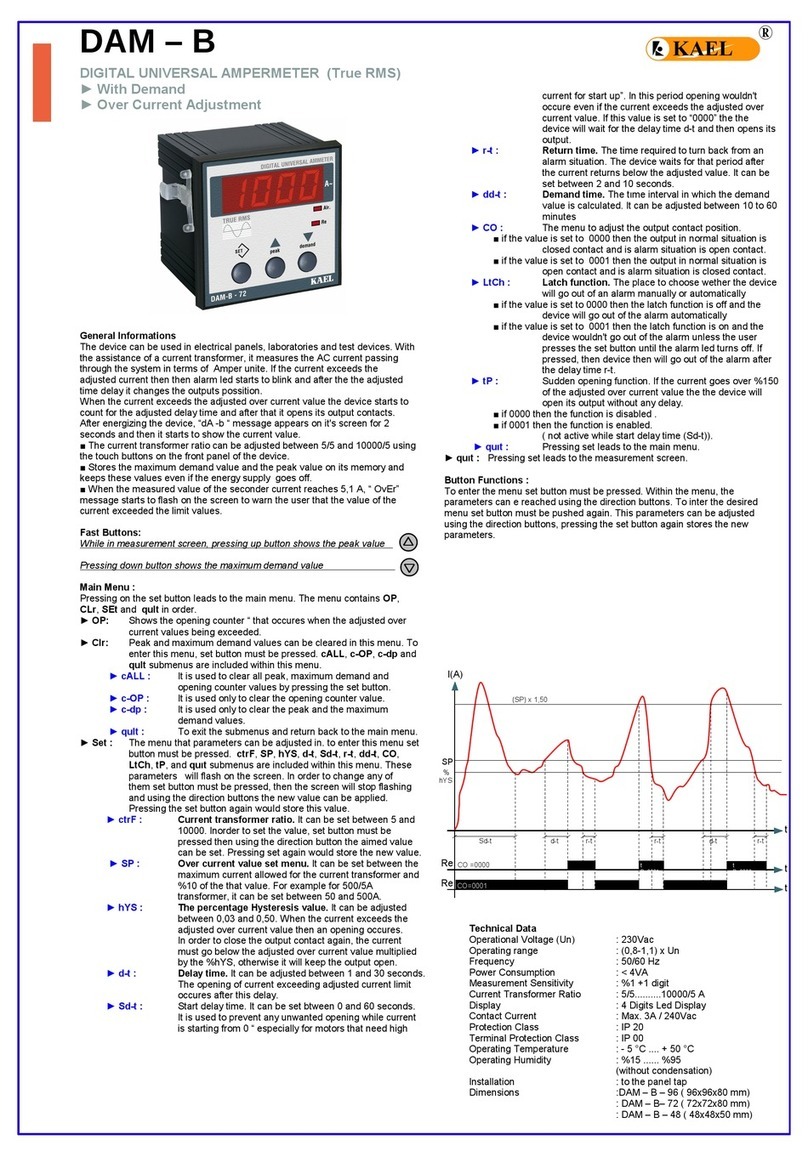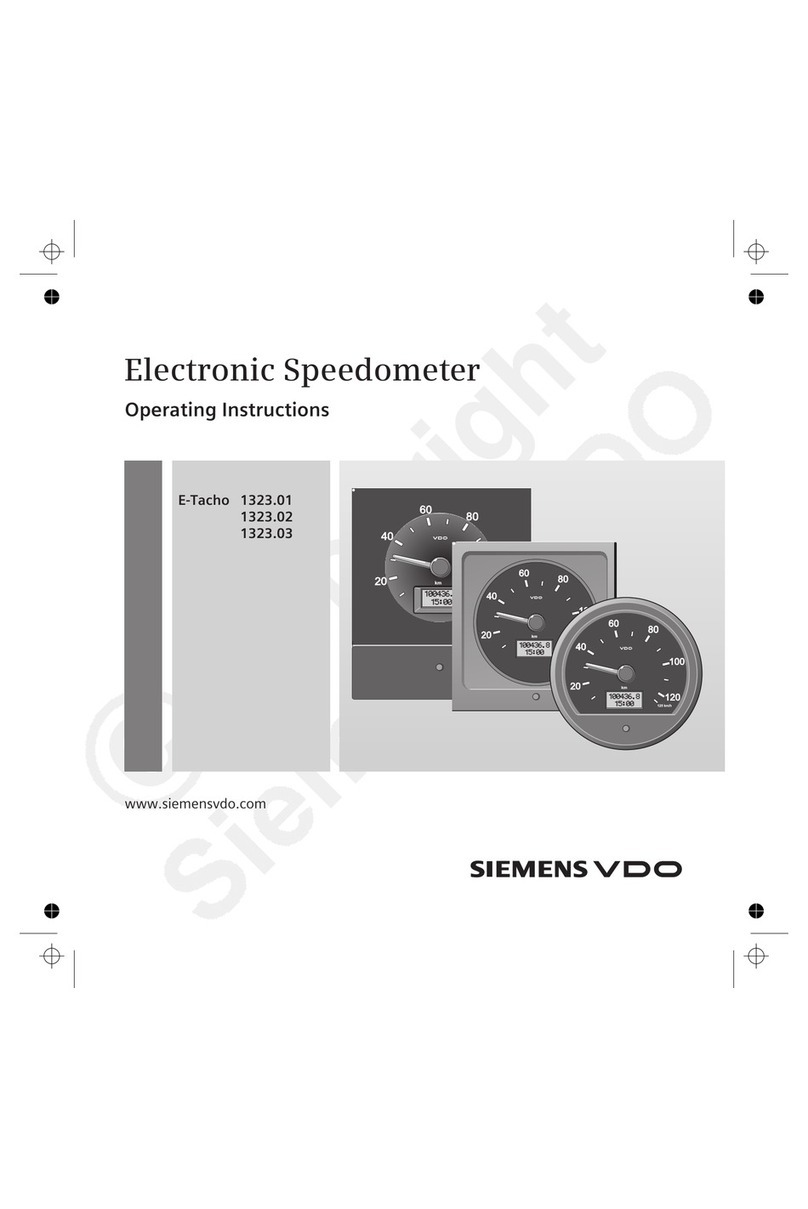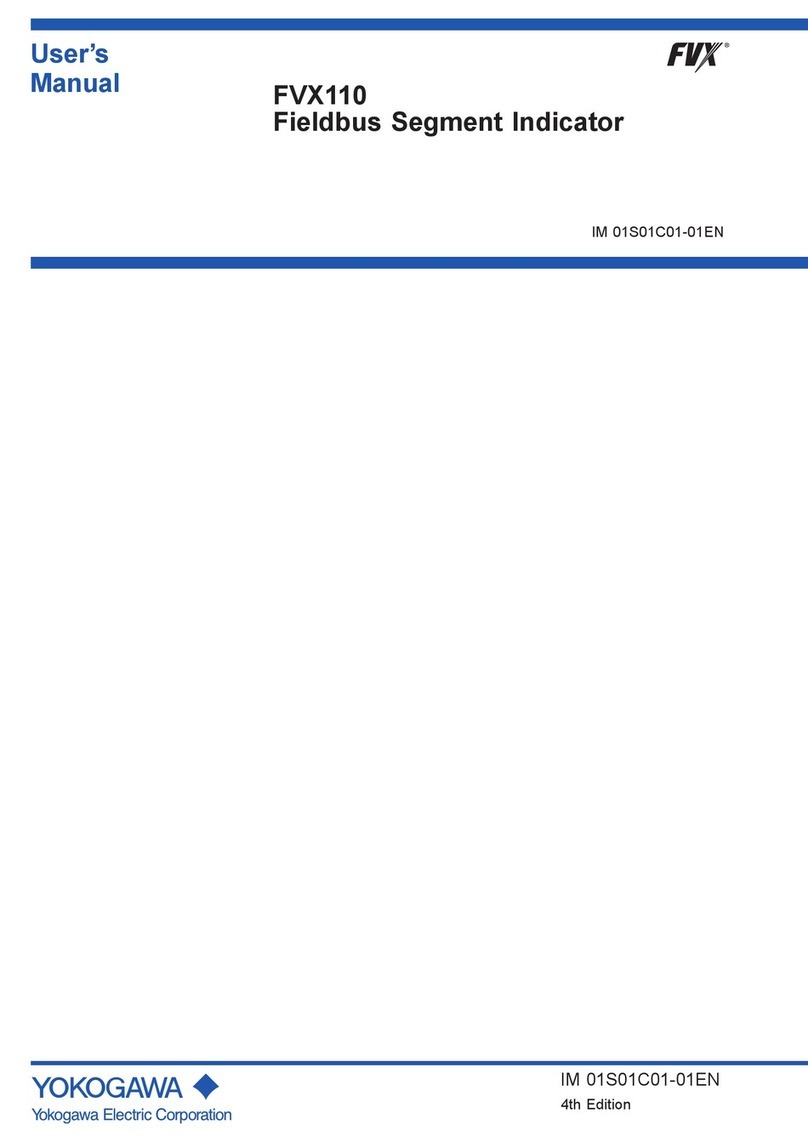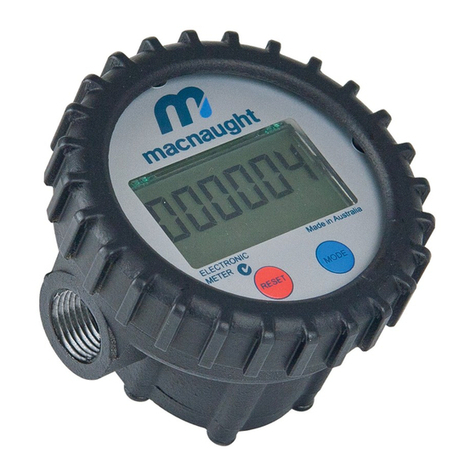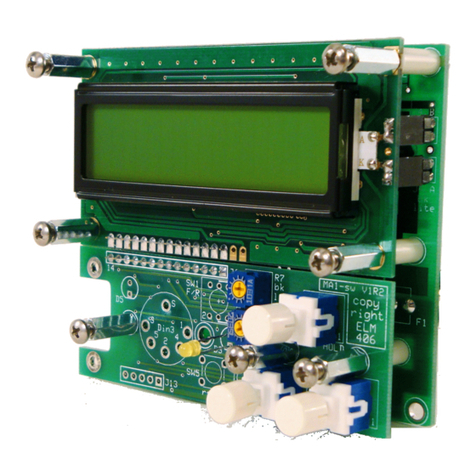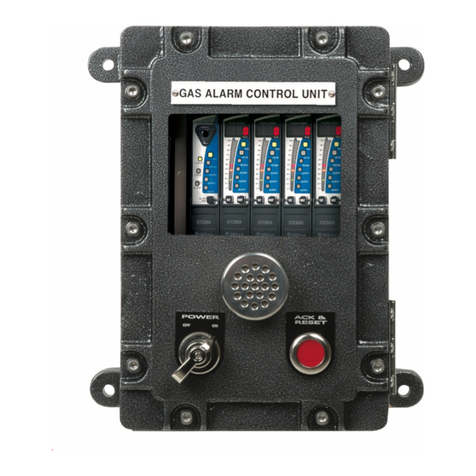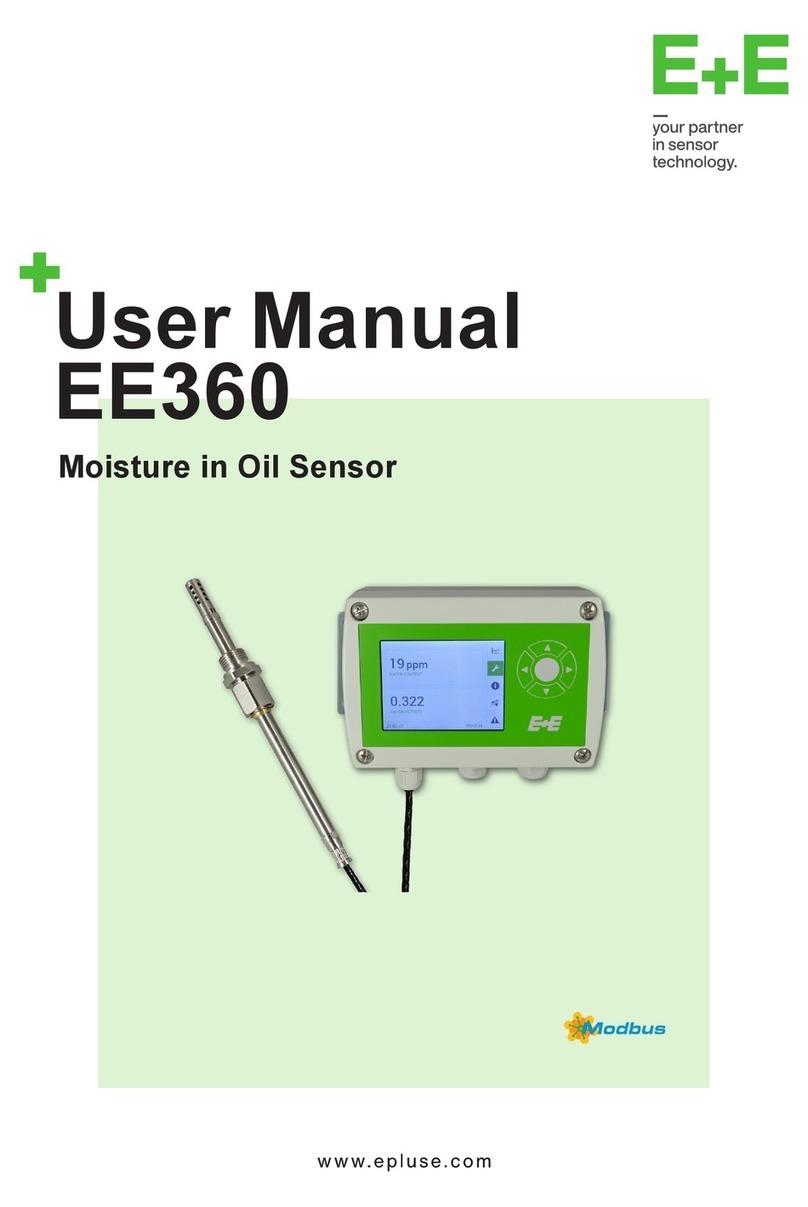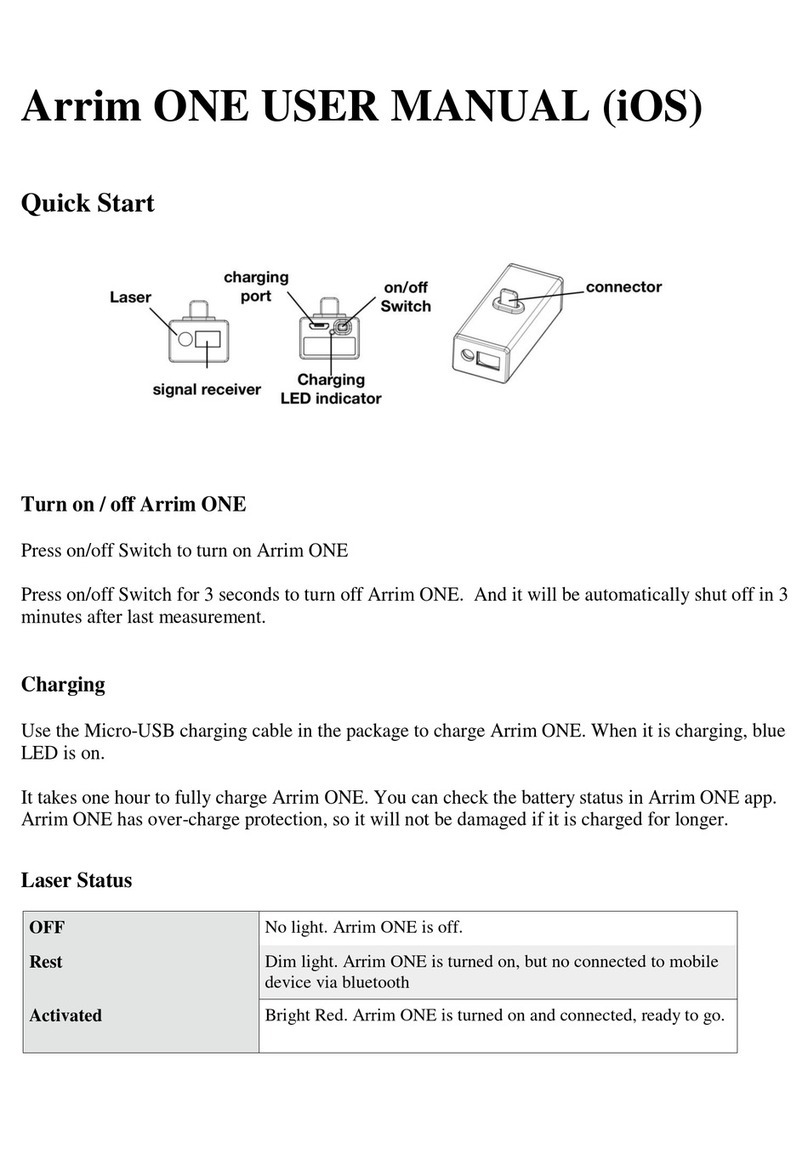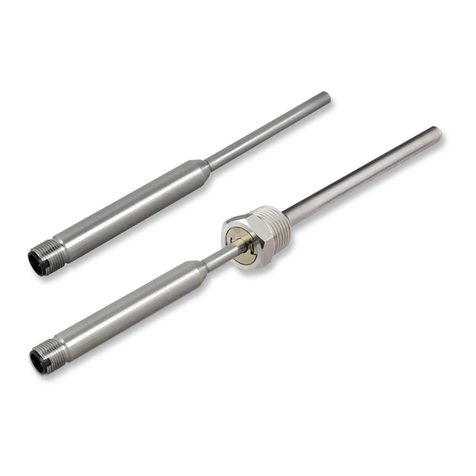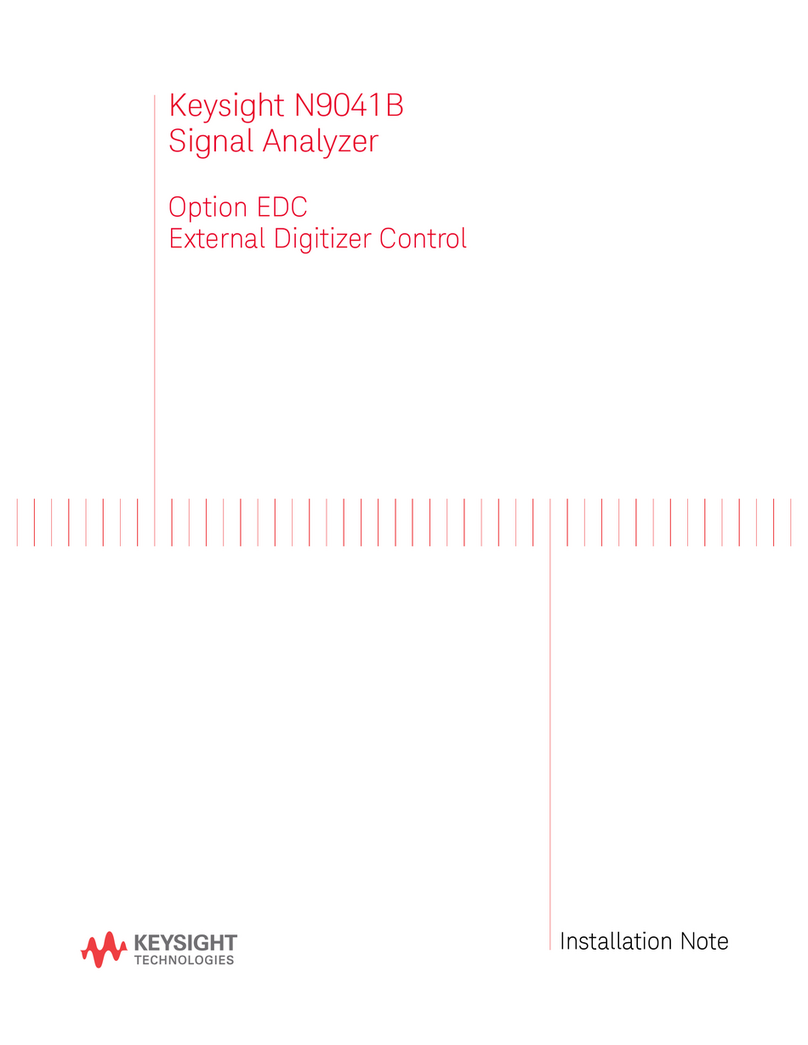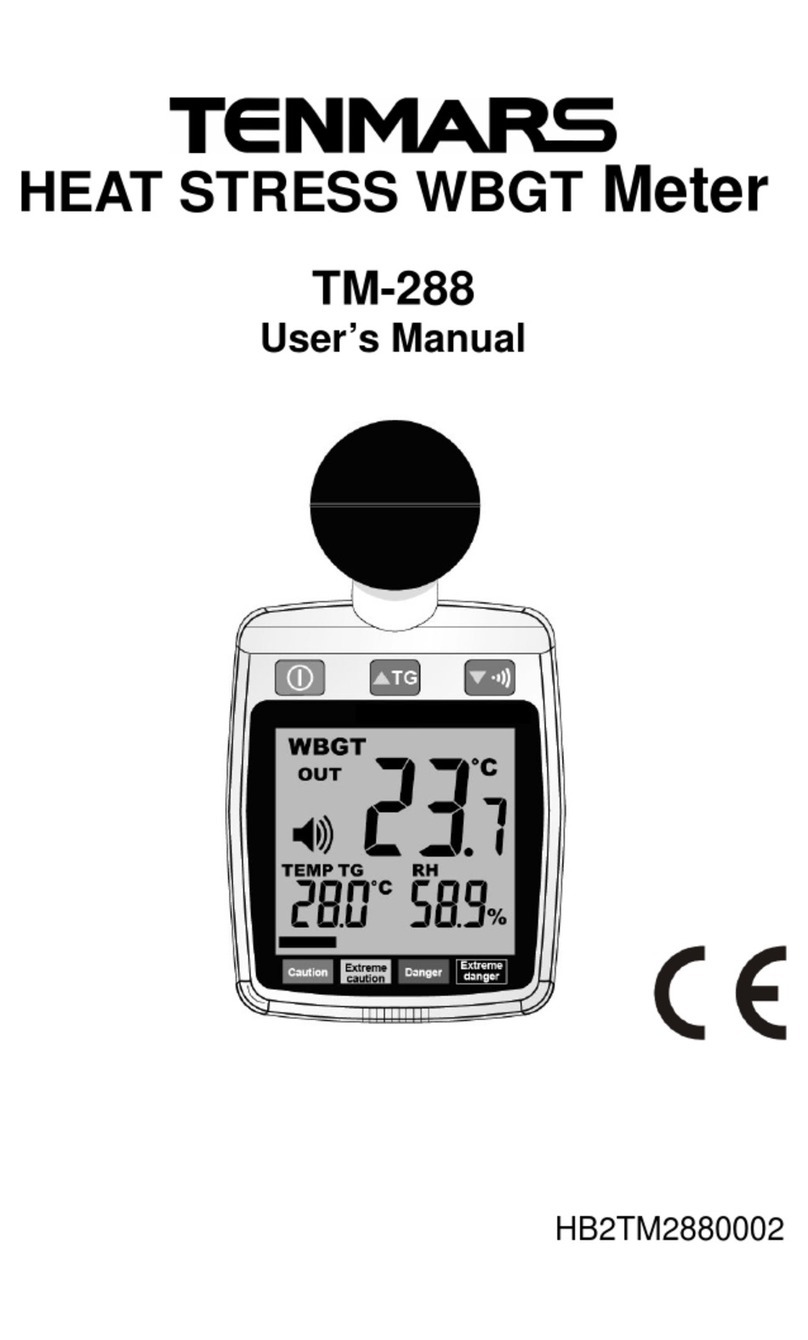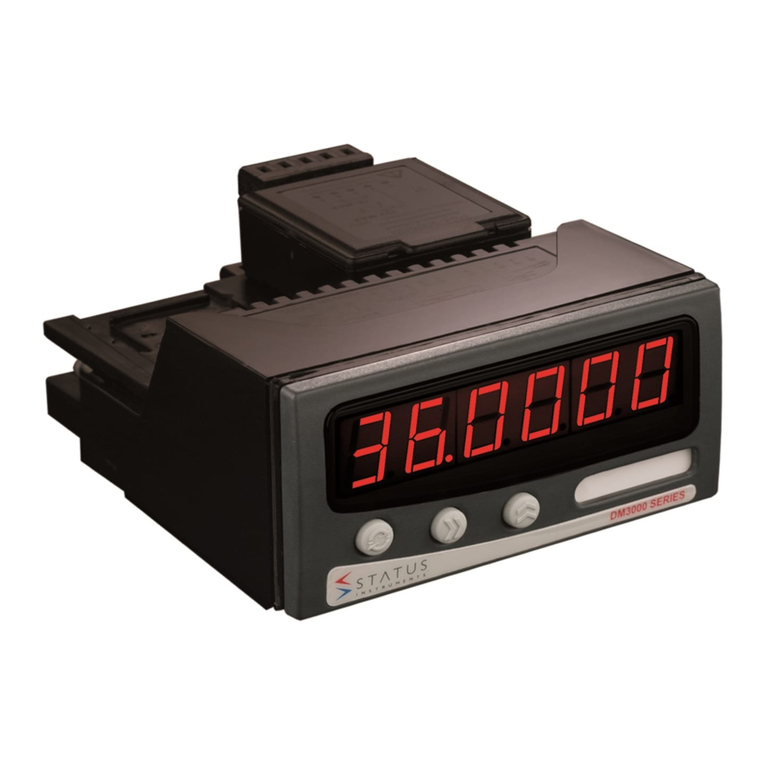Inolab pH level 2 User manual

INSTRUCTION MANUAL
pH meter
Model : pH level 2
Brand :

inoLab
pH Level 2
ba12218e04 10/2002 71
Operating Manual
Laboratory pH meter

72
Accuracy when
going to press
The use of advanced technology and the high quality stan-
dard of our instruments are the result of continuous devel-
opment. This may result in differences between this
operating manual and your instrument.
We cannot guarantee that there are absolutely no errors in
this manual. We are sure you will understand that we cannot
accept any legal claims resulting from the data, figures or
descriptions.
Warranty declara-
tion
The designated instrument is covered by a warranty of three
years from the date of purchase.
The instrument warranty extends to manufacturing faults
that are determined within the period of warranty.
The warranty excludes components that are replaced during
maintenance such as batteries, etc.
The warranty claim extends to restoring the instrument to
readiness for use but not, however, to any further claim for
damages. Improper handling or unauthorized opening of the
instrument invalidates any warranty claim.
To ascertain the warranty liability, return the instrument and
proof of purchase together with the date of purchase freight
paid or prepaid.
Copyright ©Weilheim 2002, WTW GmbH & Co. KG
Reprinting - even as excerpts - is only allowed with the ex-
plicit written authorization of WTW GmbH & Co. KG, Weil-
heim.
Printed in Germany.

List of contents
73
1 Overview . . . . . . . . . . . . . . . . . . . . . . . . . . . . . . . . 75
1.1 Keyboard . . . . . . . . . . . . . . . . . . . . . . . . . . . . . . . .76
1.2 Display . . . . . . . . . . . . . . . . . . . . . . . . . . . . . . . . . .77
1.3 Sockets . . . . . . . . . . . . . . . . . . . . . . . . . . . . . . . . .77
2 Safety . . . . . . . . . . . . . . . . . . . . . . . . . . . . . . . . . . 79
2.1 Authorized use . . . . . . . . . . . . . . . . . . . . . . . . . . .80
2.2 General safety instructions . . . . . . . . . . . . . . . . . .80
3 Commissioning . . . . . . . . . . . . . . . . . . . . . . . . . . 83
3.1 Scope of delivery . . . . . . . . . . . . . . . . . . . . . . . . . .83
3.2 Initial commissioning . . . . . . . . . . . . . . . . . . . . . . .83
4 Operation . . . . . . . . . . . . . . . . . . . . . . . . . . . . . . . 85
4.1 Switch on the instrument . . . . . . . . . . . . . . . . . . . .85
4.2 Measuring . . . . . . . . . . . . . . . . . . . . . . . . . . . . . . .86
4.2.1 Measuring the pH value . . . . . . . . . . . . . . .88
4.2.2 Measuring the Redox voltage . . . . . . . . . . .89
4.2.3 Transmitting measured values . . . . . . . . .90
4.3 Calibrating . . . . . . . . . . . . . . . . . . . . . . . . . . . . . . .91
4.3.1 Calibration interval (Int 3) . . . . . . . . . . . . . .94
4.3.2 AutoCal TEC . . . . . . . . . . . . . . . . . . . . . . .95
4.3.3 AutoCal DIN . . . . . . . . . . . . . . . . . . . . . . . .98
4.3.4 ConCal . . . . . . . . . . . . . . . . . . . . . . . . . . .101
4.4 Storing . . . . . . . . . . . . . . . . . . . . . . . . . . . . . . . . .104
4.4.1 Manual storage . . . . . . . . . . . . . . . . . . . . .104
4.4.2 Switching on AutoStore (Int 1) . . . . . . . . .106
4.4.3 Outputting the data storage . . . . . . . . . . .108
4.4.4 Clearing the storage . . . . . . . . . . . . . . . . .111
4.5 Data transmission . . . . . . . . . . . . . . . . . . . . . . . .112
4.5.1 Data transmission interval (Int 2) . . . . . . .112
4.5.2 Recorder (analog output) . . . . . . . . . . . . .114
4.5.3 PC/external printer (RS232 interface) . . .115
4.5.4 Remote control . . . . . . . . . . . . . . . . . . . . .116
4.6 Configuration . . . . . . . . . . . . . . . . . . . . . . . . . . . .117
4.7 Reset . . . . . . . . . . . . . . . . . . . . . . . . . . . . . . . . . .121

List of contents
74
5 Maintenance, cleaning, disposal . . . . . . . . . . . 123
5.1 Maintenance . . . . . . . . . . . . . . . . . . . . . . . . . . . .123
5.2 Cleaning . . . . . . . . . . . . . . . . . . . . . . . . . . . . . . .124
5.3 Disposal . . . . . . . . . . . . . . . . . . . . . . . . . . . . . . . .124
6 What to do if... . . . . . . . . . . . . . . . . . . . . . . . . . . 125
7 Technical Data . . . . . . . . . . . . . . . . . . . . . . . . . . 129
8 Lists . . . . . . . . . . . . . . . . . . . . . . . . . . . . . . . . . . 133
9 Appendix . . . . . . . . . . . . . . . . . . . . . . . . . . . . . . 139

Overview
75
1Overview
The compact inoLab pH Level 2 precision pH meter lets you
perform pH measurements rapidly and reliably. The inoLab
pH Level 2 provides the highest degree of operating com-
fort, reliability and measuring safety for all applications.
The proven MultiCal®calibration procedures and
special AutoRead function support your work with the pH
meter.
Note
The measuring instrument can also be delivered as part of
a set.
Information on this and other accessories is available in the
WTW catalog LABORATORY AND FIELD INSTRUMENTATION or
via the Internet.
1Keypad
2Display
3Sockets
3
2
1

Overview
76
1.1 Keyboard
1Call up calibration procedure
2Select measuring mode
3Display or transmit measured values
4Measuring instrument ON/OFF
5Activate/deactivate AutoRead function
6Store measured value
7Increase values, scroll
8Confirm inputs, start AutoRead
9Reduce values, scroll
1
2
6
7
8
3
4
5
9

Overview
77
1.2 Display
1.3 Sockets
Caution
Only connect probes to the instrument that cannot feed ex-
cessive voltages or currents (> SELV and > circuit with cur-
rent limiter).
Connectors:
1pH electrode
2Temperature probe
3Reference electrode
4RS 232 interface / analog output
5Plug-in power supply
Status line
Measured value display
Function and
temperature display
12
3
4
5

Overview
78

Safety
79
2 Safety
This operating manual contains basic instructions that you
must follow during the commissioning, operation and main-
tenance of the instrument. Consequently, all responsible
personnel must read this operating manual before working
with the instrument.
The operating manual must always be available within the
vicinity of the instrument.
Target group This measuring instrument was developed for use in the lab-
oratory.
Thus, we assume that, as a result of their professional train-
ing and experience, the operators will know the necessary
safety precautions to take when handling chemicals.
Symbols used
Caution
indicates instructions that have to be followed to prevent
damage to your instrument.
Warning
indicates instructions that have to be followed to protect
yourself and the instrument from dangerous electrical volt-
age.
Note
Indicates notes that draw your attention to special features.
Note
Indicates cross-references to other documents, e.g. appli-
cation reports, operating manuals of combination elec-
trodes, etc.

Safety
80
2.1 Authorized use
This instrument is authorized exclusively for pH and Redox
measurements in the laboratory.
The technical specifications as given in chapter 7 TECHNICAL
DATA, must be observed. Only the operation and running of
the measuring instrument according to the instructions given
in this operating manual is authorized.
Any other use is considered unauthorized.
2.2 General safety instructions
This instrument is constructed and tested in compliance with
the EN 61010-1 safety regulations for electronic measuring
instruments.
It left the factory in a safe and secure technical condition.
Function and opera-
tional safety
The smooth functioning and operational safety of the instru-
ment can only be guaranteed if the generally applicable
safety measures and the specific safety instructions in this
operating manual are followed.
The smooth functioning and operational safety of the instru-
ment can only be guaranteed under the climatic conditions
specified in chapter 7 TECHNICAL DATA.
If the instrument was transported from a cold environment to
a warm environment, the formation of condensate can lead
to the faulty functioning of the instrument. In this event, wait
until the temperature of the instrument reaches room tem-
perature before putting the instrument back into operation.
Caution
The instrument is only allowed to be opened by personnel
authorized by WTW.

Safety
81
Safe operation If safe operation is no longer possible, the instrument must
be taken out of service and secured against inadvertent op-
eration.
Safe operation is no longer possible if:
lthe instrument has been damaged in transport
lthe instrument has been stored under adverse conditions
for a lengthy period of time
lthe instrument is visibly damaged
lthe instrument no longer operates as described in this
manual.
If you are in doubt contact the supplier of the instrument.
Obligations of the
operator
The operator of this measuring instrument must ensure that
the following laws and guidelines are observed when using
dangerous substances:
lEEC directives for protective labor legislation
lNational protective labor legislation
lSafety regulations
lSafety datasheets of the chemical manufacturer

Safety
82

Commissioning
83
3 Commissioning
3.1 Scope of delivery
lLaboratory measuring instrument, inoLab pH Level 2
lPlug-in power supply
lOperating manual and short manual in the cover
l4 x type AA Mignon 1.5 V batteries
3.2 Initial commissioning
Perform the following activities:
lSet the date and time
lConnect the plug-in power supply.
1Press and hold down the mkey.
2 Press the ekey.
The Display test appears briefly on the display.
The measuring instrument then switches automati-
cally to the setting of the baud rate.
3Press the gkey repeatedly until the date flashes on
the display.
4 Set today’s date by pressing u d.
5Confirm with g.
The date (month) flashes on the display.
6 Set the current month by pressing u d.
7Confirm with g. The year appears on the display.
8 Set the current year by pressing u d.
9Confirm with g. The hour field flashes on the dis-
play.
10 Set the current time by pressing u d.
11 Confirm with g.
The minutes field flashes on the display.
12 Set the current time by pressing u d.
Setting the date
and time

Commissioning
84
Connecting the
plug-in power
supply
The plug-in power supply supplies the pH meter with low
voltage (7.5 V ... 12 V DC).
Warning
The line voltage on site must lie within the input voltage
range of the original plug-in power supply unit (see chapter
7 TECHNICAL DATA).
Caution
Use original plug-in power supplies only
(see chapter 7 TECHNICAL DATA).
Note
You can also perform measurements without a plug-in pow-
er supply.
13 Confirm with g. The measuring instrument then
switches to the pH measuring mode.
14 Switch off the instrument by pressing e.
1Insert the plug (1) into the socket (2) of the pH meter.
2 Connect the original WTW plug-in power supply (3) to
an easily accessible mains socket.
1
2
3

Operation
85
4Operation
4.1 Switch on the instrument
Note
The instrument has an energy saving feature to avoid
unnecessary battery depletion.
The energy saving feature switches the instrument off if no
key has been pressed for an hour.
The energy saving feature is not active:
lif the power is supplied by the plug-in power supply
lif the AutoStore function is active
lif the communication cable is connected
lif the recorder cable is connected
lif the printer cable is connected
(for external printers)
1Place the instrument on a flat surface and protect it
against intense light and heat.
2 Press the ekey.
The display test appears briefly on the display.
The instrument then switches automatically to the
previously selected measuring mode.

Operation
86
4.2 Measuring
Preparatory
activities
Perform the following preparatory activities when you want
to measure:
Note
Incorrect calibration of the pH electrode will result in incor-
rect measured values. Therefore, regularly perform calibra-
tion before measuring.
Caution
When connecting an earthed PC/printer, measurements
cannot be performed in earthed media as incorrect values
would result.
The RS232 interface is not galvanically isolated.
1Connect the electrode to the instrument.
2 Adjust the temperature of the buffer or test solutions
or measure the current temperature if the measure-
ment is made without a temperature probe.
3Calibrate or check the instrument with the electrode.
4 Select the measuring mode by pressing m.

Operation
87
Temperature probe Measurements can be performed with and without a temper-
ature probe. A connected temperature probe is indicated by
TP on the display.
Note
The pH meter automatically recognizes the type of the tem-
perature probe used. As a result, you can connect elec-
trodes with the NTC30 or Pt1000.
The temperature measurement is absolutely essential for a
reproducible pH measurement. If the measurement is made
without a temperature probe, proceed as follows:
Note
When calibrating without a temperature probe, set up the
current temperature of the respective buffer solution manu-
ally by pressing the u d keys.
1Determine the current temperature using a thermo-
meter.
2 Set up the temperature by pressing u d.

Operation
88
4.2.1 Measuring the pH value
AutoRead AR
(Drift control)
The AutoRead function (drift control) checks the stability of
the measurement signal. The stability has a considerable
effect on the reproducibility of the measured values.
For identical measurement conditions, the following criteria
apply:
lpH value: better than 0.02 (response time: > 30 s)
1Perform the preparatory activities according to sec-
tion 4.2.
2 Immerse the pH electrode into the test sample.
3Press the mkey until pH appears in the status dis-
play. The pH value appears on the display.
1Call up the pH measuring mode by pressing m.
2 Activate the AutoRead function by pressing a.
The current measured value is frozen (Hold function).
3Start the AutoRead function by pressing g.
AR flashes on the display until a stable measured val-
ue is reached.
This measured value is transmitted to the interface.
4 If necessary, start the next AutoRead measurement
by pressing g.
5To cancel the AutoRead function: Press the akey.

Operation
89
Note
The current AutoRead measurement (with acceptance of
the current value) can be terminated at any time by pressing
g.
4.2.2 Measuring the Redox voltage
The instrument can measure the Redox voltage (mV) of a
solution when connected with a Redox electrode, e.g. Sen-
Tix ORP.
Note
Redox electrodes are not calibrated. However, you can
check Redox electrodes using a test solution.
1Perform the preparatory activities according to sec-
tion 4.2.
2 Immerse the Redox electrode into the test sample.
3Press the mkey repeatedly until U appears in the
status line. The Redox voltage (mV) of the sample
appears on the display.
4 Wait for a stable measured value.
Table of contents
